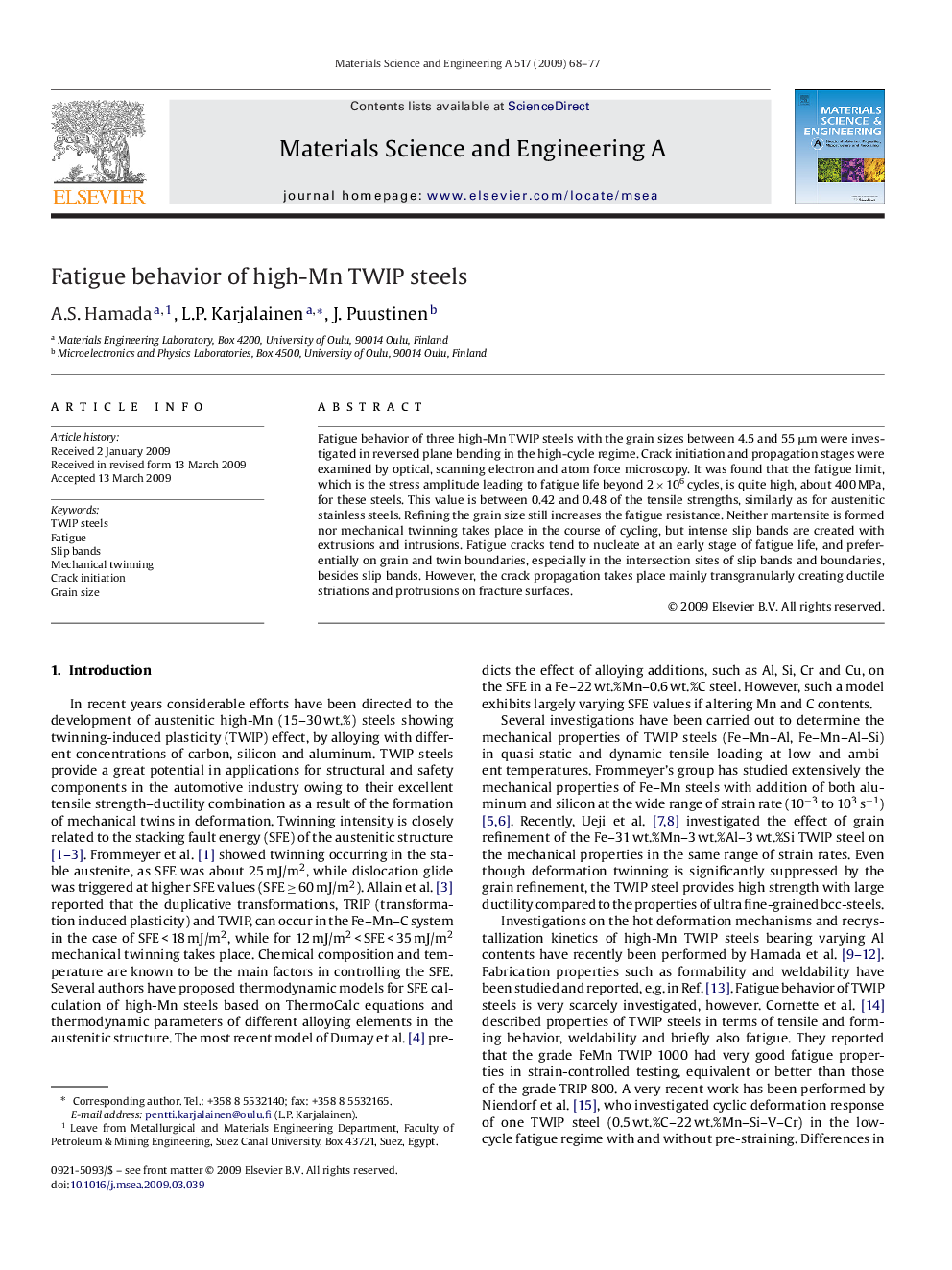| Article ID | Journal | Published Year | Pages | File Type |
|---|---|---|---|---|
| 1580635 | Materials Science and Engineering: A | 2009 | 10 Pages |
Abstract
Fatigue behavior of three high-Mn TWIP steels with the grain sizes between 4.5 and 55 μm were investigated in reversed plane bending in the high-cycle regime. Crack initiation and propagation stages were examined by optical, scanning electron and atom force microscopy. It was found that the fatigue limit, which is the stress amplitude leading to fatigue life beyond 2 Ã 106 cycles, is quite high, about 400 MPa, for these steels. This value is between 0.42 and 0.48 of the tensile strengths, similarly as for austenitic stainless steels. Refining the grain size still increases the fatigue resistance. Neither martensite is formed nor mechanical twinning takes place in the course of cycling, but intense slip bands are created with extrusions and intrusions. Fatigue cracks tend to nucleate at an early stage of fatigue life, and preferentially on grain and twin boundaries, especially in the intersection sites of slip bands and boundaries, besides slip bands. However, the crack propagation takes place mainly transgranularly creating ductile striations and protrusions on fracture surfaces.
Related Topics
Physical Sciences and Engineering
Materials Science
Materials Science (General)
Authors
A.S. Hamada, L.P. Karjalainen, J. Puustinen,
